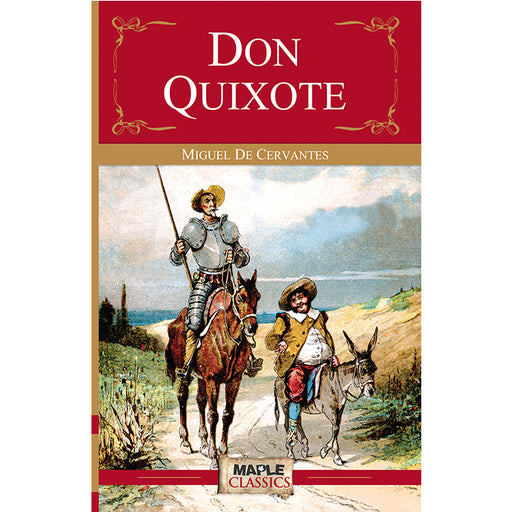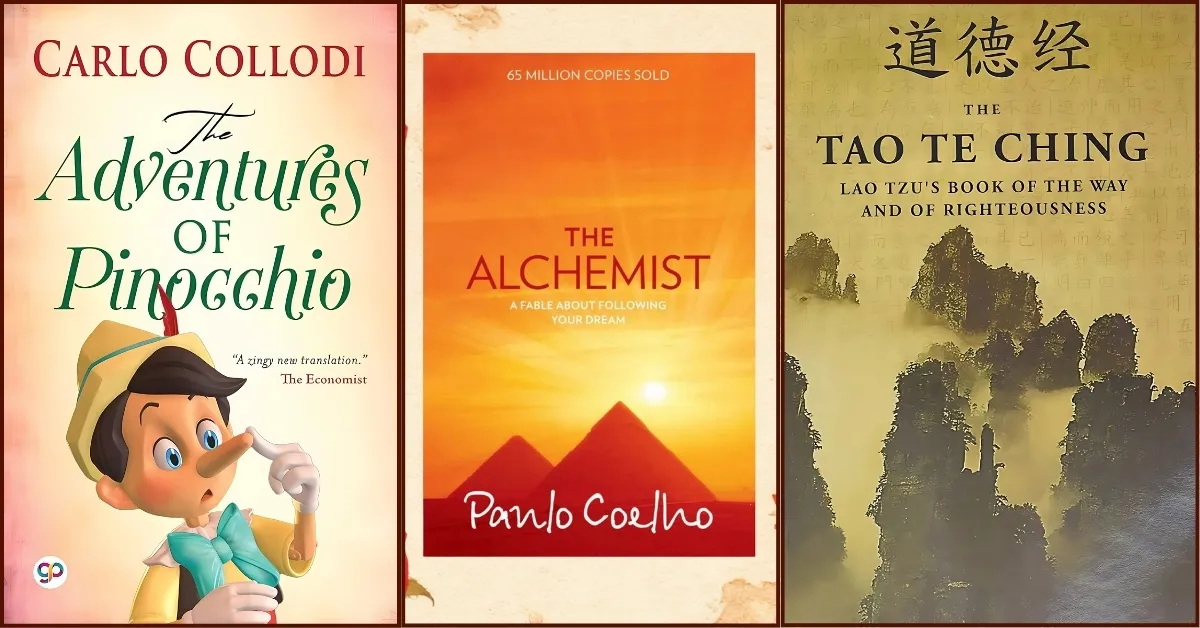So many of us writers, translators, and readers are accustomed to the translation process that it can be surprising to learn that the first-ever translation took place more than 2,000 years ago.
Or that one of the most published books was translated into over 300 languages? The very etymology of the word “translation” comes from the Latin word “translatio”, which means “to carry across”, much like how stories are carried across cultures.
Literary translation serves as the bridge for readers to engage with ideas, values, and voices from far outside our collective borders. Without it, millions would never have the chance to experience the world’s greatest stories.
Here’s a fun question for you: Do you know what the most translated book in the world is? In how many languages has it been published?Let’s take a look at the 10 most translated books of all time.
Check Out| List of International Booker Prize Winners [2005 - 2025]
List of the Most Translated Books Across the Globe
According to Transpalm, here are the top 10 most translated books of all time:
| Rank | Name of the Book | Number of Languages Translated | Notable Fact(s) |
| 1 | The Bible | 3350 | Most translated book in history; parts translated into over 3350 languages, with the New Testament in over 2000 and the Old Testament in about 700 languages. |
| 2 | The Little Prince | 380–600 | Originally published in French in 1943, famous for its poetic and philosophical storytelling, with watercolour illustrations by the author. |
| 3 | The Adventures of Pinocchio | 260 | Written by Carlo Collodi and published in 1883, the story is of a puppet who wants to be a real boy. |
| 4 | Tao Te Ching | 250 | An ancient Chinese philosophical text by Laozi, one of the most translated non-religious books from Asia. |
| 5 | Alice's Adventures in Wonderland | 174 | Written by Lewis Carroll, known for its wordplay and whimsical logic, translated into almost 174 languages. |
| 6 | Don Quixote | 140 | Written by Miguel de Cervantes, considered the first modern novel and has been translated into over 140 languages. |
| 7 | Andersen's Fairy Tales | 129 | Collection by Hans Christian Andersen; includes classics like "The Little Mermaid" and "The Emperor’s New Clothes"; translated into more than 125 languages. |
| 8 | The Prophet | 100 | Written by Khalil Gibran, poetic essays on life, love, and spirituality; translated into over 100 languages. |
| 9 | Harry Potter Series | 80 | Written by J.K. Rowling, the series has become a global cultural phenomenon, translated into 80 languages. |
| 10 | The Alchemist | 80 | Written by Paulo Coelho, an inspirational novel about following one’s dreams, translated into over 80 languages. |
1. The Bible

Source: iStock
The Bible is the most translated book in history, with portions available in over 3,350 languages, including the New Testament in more than 2,000 and the Old Testament in about 700 languages.
This ancient text is composed of 66 books, divided into the Old Testament (Hebrew scriptures) and the New Testament (Christian writings), and is foundational to Judaism and Christianity.
The Bible includes a wide range of genres—history, poetry, prophecy, and letters—and its stories, such as those of Moses, David, and Jesus, have shaped art, literature, and culture worldwide.
A bit more obscure is the fact that the earliest manuscript fragments of the text of the Bible we have today date to the 2nd century BCE.
2. The Little Prince

Source: Amazon.in
Antoine de Saint-Exupéry’s The Little Prince is one of the most translated and best-selling novellas of all time since its original publication in 1943.
The story follows a pilot stranded in the Sahara who meets a mysterious young prince from a distant asteroid.
The prince recounts his journey across various planets, each inhabited by eccentric adults—a king, a conceited man, a tippler, and a businessman—highlighting the absurdities of grown-up logic.
During his time on Earth, the little prince meets a fox who teaches him about love and responsibility, summed up in the beautiful truth, “You become responsible, forever, for what you have tamed.”
The book’s poetic prose and philosophical musings have made it a favorite for both children and adults. Interestingly, the author, a pilot himself, disappeared on a reconnaissance mission a year after publication, adding to the book’s mystique.
3. The Adventures of Pinocchio

Source: Amazon.in
Carlo Collodi’s The Adventures of Pinocchio (1883) is the tale of a wooden puppet who wishes to be a real boy. Set in Tuscany, the novel follows Pinocchio as he gets into mischief, is led astray and learns valuable lessons through a series of fantastical adventures.
He is led to follow his conscience, represented by the advice of the now living talking cricket, and in the end, earns his humanity through acts of unselfish bravery. The story is filled with memorable characters, including the kind-hearted Geppetto and the cunning Fox and Cat.
An even more obscure fact is that Collodi had intended for the story to end with Pinocchio’s death, but due to popular demand, he wrote a more optimistic ending.
Having been translated into more than 260 different languages, the book is easily one of the most prolific pieces of work that ever existed and continues to make a mark as a classic of all time, with dozens of adaptations.
4. Tao Te Ching

Source: Amazon.in
The Tao Te Ching, attributed to the legendary ancient Chinese philosopher Laozi, is one of the world’s most translated books, a foundational text of Taoism. Composed of 81 short chapters, it explores the concept of the Tao (the Way), emphasising harmony with nature, simplicity, and humility.
The Tao Te Ching encourages readers to embrace “wu wei”, or non-action, arguing that the most effective approach to life is one that moves in harmony with the universe instead of pushing against the current. Its paradoxical and poetic style has influenced philosophy, religion, and even modern leadership theories.
Perhaps a more surprising fact is that despite the extraordinary impact and depth of the text, the Tao Te Ching is one of the most contended and analysed texts in history.
5. Alice’s Adventures in Wonderland

Source: Amazon.in
Lewis Carroll’s Alice’s Adventures in Wonderland (1865) follows young Alice as she tumbles down a rabbit hole into a whimsical world filled with peculiar characters and nonsensical logic.
The book’s imaginative setting and wordplay have made it a classic of children’s literature, translated into at least 174 languages.
Alice encounters the White Rabbit, the Cheshire Cat, the Mad Hatter, and the tyrannical Queen of Hearts, each embodying various aspects of adult eccentricity and irrationality.
A lesser-known fact is that Carroll (real name Charles Lutwidge Dodgson) was a mathematician, and the book subtly parodies Victorian society and logic.
Read On| Top 10 Best-Selling Books of All Time
6. Don Quixote

Source: Maple Press
Miguel de Cervantes’ Don Quixote (1605) is considered the first modern novel and has been translated into over 140 languages.
The story follows Alonso Quixano, a middle-aged man from La Mancha who becomes obsessed with chivalric romances and sets out as a self-styled knight, Don Quixote, accompanied by his loyal squire Sancho Panza.
Their adventures are both comedic and poignant, as Quixote’s idealism clashes with the realities of the world. The novel is celebrated for its rich character development and satirical take on human nature.
7. Andersen’s Fairy Tales

Source: Amazon.in
Hans Christian Andersen’s fairy tales, first published in the 1830s and 1840s, have been translated into over 129 languages.
His stories—including “The Little Mermaid”, “The Ugly Duckling”, and “The Snow Queen”—are beloved for their imaginative plots, moral lessons, and emotional depth. Andersen’s tales often feature underdogs who triumph through kindness, perseverance, or love.
A lesser-known fact is that Andersen’s own life, marked by poverty and unrequited love, deeply influenced his writing, infusing his stories with a unique blend of melancholy and hope.
8. The Prophet

Source: Amazon.in
Kahlil Gibran’s The Prophet (1923) is a collection of 26 poetic essays that explore life’s great themes—love, marriage, children, work, and death—through the voice of the prophet Almustafa.
Translated into over 100 languages, the book is celebrated for its lyrical prose and universal wisdom. As Almustafa prepares to leave the city of Orphalese, the townspeople ask him to share his insights, resulting in a series of profound reflections on the human condition.
A lesser-known fact is that Gibran wrote The Prophet in English, his third language, and the book has never been out of print, remaining a staple of spiritual literature worldwide.
9. Harry Potter Series

Source: Amazon.in
J.K. Rowling’s Harry Potter series, beginning with Harry Potter and the Philosopher’s Stone (1997), has been translated into over 80 languages.
The series follows the journey of Harry Potter, an orphan who discovers he is a wizard and attends Hogwarts School of Witchcraft and Wizardry. Alongside friends Ron and Hermione, Harry faces the dark wizard Voldemort, uncovering secrets about his past and the magical world.
A lesser-known fact is that Rowling wrote much of the first book while struggling financially, and the series’s success transformed children’s literature and popular culture.
10. The Alchemist

Source: Amazon.in
Paulo Coelho’s The Alchemist (1988) is an allegorical novel about a young Andalusian shepherd named Santiago who embarks on a journey to find a worldly treasure. Along the way, he learns about listening to his heart, following his dreams, and recognising omens.
The book’s uplifting message and simple storytelling have made it a global bestseller, translated into over 80 languages.
A lesser-known fact is that The Alchemist was initially met with modest success in Brazil but became a worldwide phenomenon after international publication, inspiring readers to pursue their dreams.
What is the Most Translated Book in History?
The most translated book in history is the Bible. It has been translated, either in full or in part, into over 3,600 languages.
The New Testament alone has been translated into more than 1,600 languages, and the entire Bible (both Old and New Testaments) is available in over 700 languages.
What's Next| List of Highest-Paid Authors in the World (2025)

Comments
All Comments (0)
Join the conversation